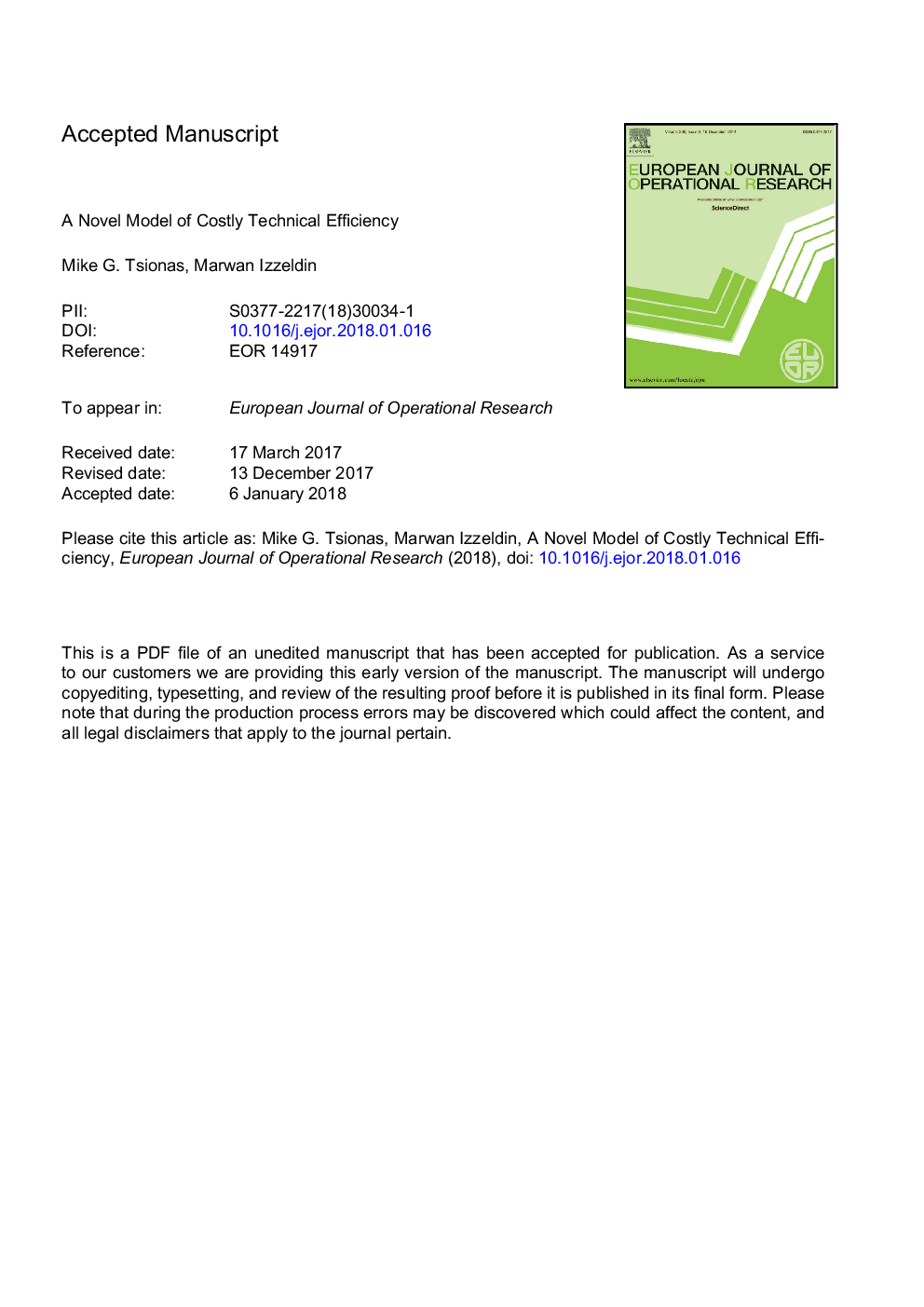| Article ID | Journal | Published Year | Pages | File Type |
|---|---|---|---|---|
| 6894841 | European Journal of Operational Research | 2018 | 23 Pages |
Abstract
This paper presents a novel model of measuring technical inefficiency based on the notion that higher efficiency requires a certain cost. First, we apply the “rational inefficiency hypothesis” of Bogetoft and Hougaard (2003) but we fail to find that it rationalizes our data set of large U.S banks with multiple inputs and outputs. In consequence, we adopt a novel model of profit maximization which explicitly incorporates the cost of technical inefficiency. The cost of inefficiency is treated as unknown and is parametrized as a function of inputs, outputs and decision-making-unit specific fixed effects. More importantly, by showing the model to be equivalent to one in which inefficiency is an arbitrary function of inputs, outputs and the inefficiency cost, we are able to determine optimal directions in the input-output space that would reduce inefficiency. Bayesian techniques organized around Markov Chain Monte Carlo are used to perform the computations and provide statistical inferences as well as useful policy measures to reduce inefficiencies in the U.S banking sector through an examination of different realistic scenarios.
Related Topics
Physical Sciences and Engineering
Computer Science
Computer Science (General)
Authors
Mike G. Tsionas, Marwan Izzeldin,
